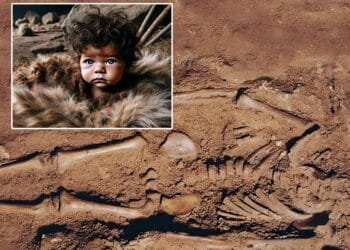In Rennes, northwestern France, archaeologists have uncovered remnants of a vibrant ancient Roman city beneath a 19th-century hospital. This significant discovery, initiated in 2022, is now revealing detailed insights into the city’s structure and the daily lives of its inhabitants.

The French National Institute for Preventive Archaeological Research (Inrap) has been leading the excavations at the former Hôtel Dieu hospital site, uncovering a wealth of historical artifacts and architectural features.
The ancient city, known as Condate, is organized around a central north-south street (cardo) and two intersecting east-west streets (decumanus). These thoroughfares delineated urban blocks that served various functions, blending residential, commercial, and religious activities. Initial construction began in the 1st century, following extensive clearing and terracing work. Early buildings featured wooden posts and low sills, gradually giving way to masonry structures by the end of the century.

One of the most notable discoveries is a large sanctuary, part of a religious complex, built with masonry at the end of the 1st century. This sanctuary succeeded an earlier wooden structure and included a courtyard designed to welcome worshippers. According to researchers, the sanctuary’s northern wall, uncovered in 2024, spans over 100 meters and houses at least one temple. The southern part of this complex integrates a segment of an east-west street, reflecting the Romans’ meticulous urban planning.
In addition to the sanctuary, the city boasted warehouses, shops, and residences constructed from the same stone masonry. The roads were refurbished to integrate these new structures, illustrating the city’s growth and prosperity during this period. The Roman influence extended into the 3rd century, with large private residences (domus)featuring advanced amenities such as hypocausts—a system for underfloor heating. Archaeologists discovered remnants of these luxurious homes, including a reception room where owners could entertain guests.
However, the city’s fortune waned by the end of the 3rd century. The public sanctuary was dismantled, and the stones from its enclosure wall were repurposed, possibly during the construction of the castrum, a fortified enclosure, around 270-280 CE. In the northwest of the excavation site, a domus (large private residence) was entirely dismantled to open a quarry for extracting alluvial sands. Despite this decline, some residences continued to be occupied into the 4th century, leaving behind artifacts that paint a vivid picture of the era.

As the city decayed, a cemetery was established in the ruined areas at the turn of the 3rd century. This necropolis, used until the 8th century, contained over 600 graves. The burials, organized in rows and oriented east-west, included individuals interred in shrouds or wooden coffins. This extensive burial ground extended north to Parc des Tanneurs, bounded by a cardo to the west and the former sanctuary to the south.
The modern city of Rennes, situated about 200 miles west of Paris, stands on layers of history that reveal the ebb and flow of ancient civilizations. The ongoing excavations at the former Hôtel Dieu hospital site, overseen by Linkcity, a real estate developer under Bouygues Construction, aim to balance development with heritage preservation. This project, supported by the community and SEM Territoires, covers an area of 5,600 square meters and follows previous excavations in the district.































